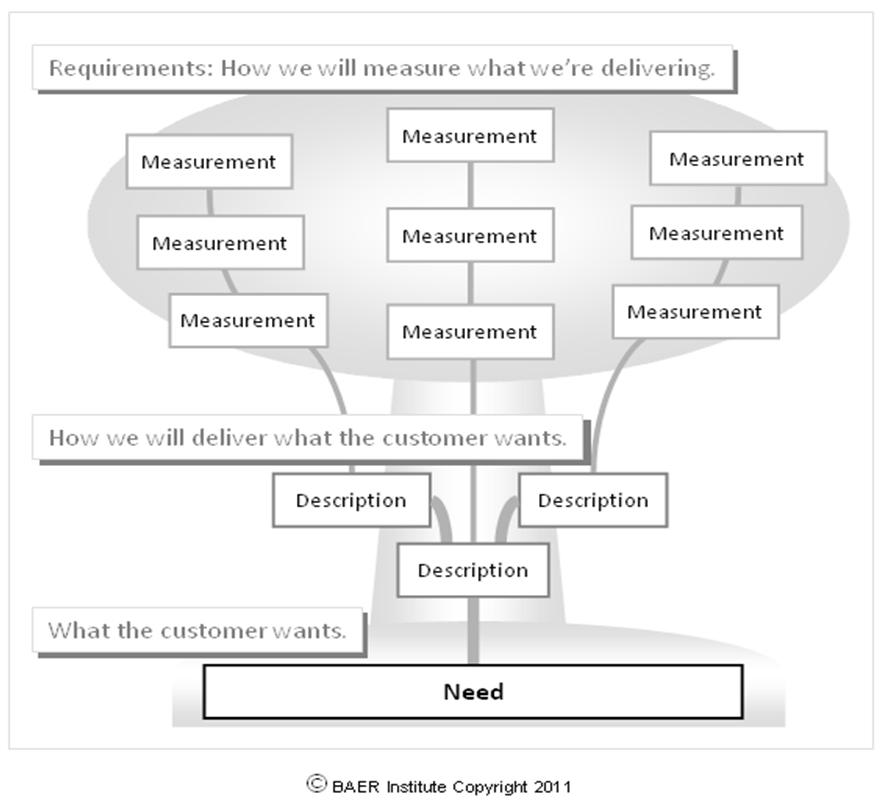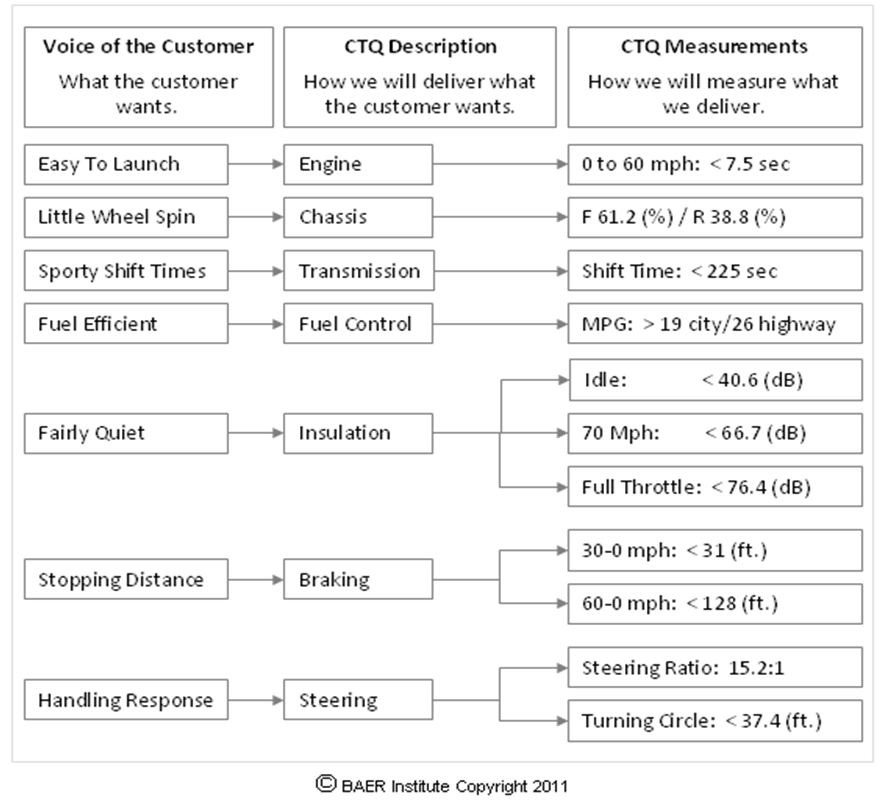In the last post on the Business Performance Measurement Series Topic 1. Customer Knowledge Voice of the Customer (Part 1 VOC) we finished with a set of VOC Interview Responses. Before we get into the specifics of how to convert customer expectations into actionable requirements we need to introduce the Critical to Quality Tree.
A Critical to Quality (CTQ) Tree is used to translate qualitative customer expectations into quantified requirements. CTQs are derived from customer needs and are the essential measurable features of a product or service which must be met in order to satisfy the customer.
Wants and needs are what a customer expects of a service; CTQs are what we measure in order to determine if we are satisfying the customer. The customer often articulates their expectations in plain English; it is up to us to convert expectations into measurable requirements.
So why is it called a tree? We are trying to get to the root of what a customer says they want, interpret what they say into a description of how we are going to deliver what they want, and translate that description into a measurable requirement.
The CTQ looks like a tree.
The CTQ Tree image is a useful conceptual tool and you can use it as is. But, you may prefer to use an Excel template. Working in Excel (or any other spreadsheet program) will allow you to keep expanding the list of articulated needs as well as the descriptions and measurements.
Some CTQ Trees are fairly simple and can fit on a one-page tree image. Others can be quite extensive and you may find that with the CTQ spreadsheet version it is easier to keep track of all inputs.
With that understanding we can now move on to converting VOC responses into requirements. You’ll recall that the VOC responses were as follows:
Voice of the Customer Interview Responses
- I would like a vehicle that is remarkably easy to launch, with not too much wheel spin, and sporty shift times.
- I’m looking for something that is reasonably fuel efficient and is fairly quiet at highway speeds.
- I’m okay if the braking is average I don’t plan on doing 120 mph. I would like solid pedal feel throughout, a little fade is okay as long as I have an acceptable stopping distance.
- I want good handling with a sporty and well-controlled suspension, with an excellent feel during hard cornering, responsive, and a sense of control. It would be nice if the body motions are well-controlled and has a chassis that is stable even over mid-corner bumps.
As you can see these are general commentary and it would be difficult to determine if your products or services are meeting what your customer’s want. So let’s dig a little deeper and move from the general to the specific.
We’ll progress through the following steps.
- Wants: determine what the customer wants, which we’ve compiled from the Voice of the Customer technique.
- Describe: next we need describe which function of our process, product, or service will deliver what the customer wants.
- Measure: finally, we will determine the specific set of requirements of those functions so we can measure what we deliver.
Example of a Critical to Quality Tree based on the Voice of the Customer Interview Responses:
So now we know what the customer wants, what part of our product is most important to our customers, and how to measure our customer’s expectations. With this understanding we’re ready to continue traveling the self-funding our growth path.
In the next post; Customer Perception, we will measure how our customers perceive our performance.



